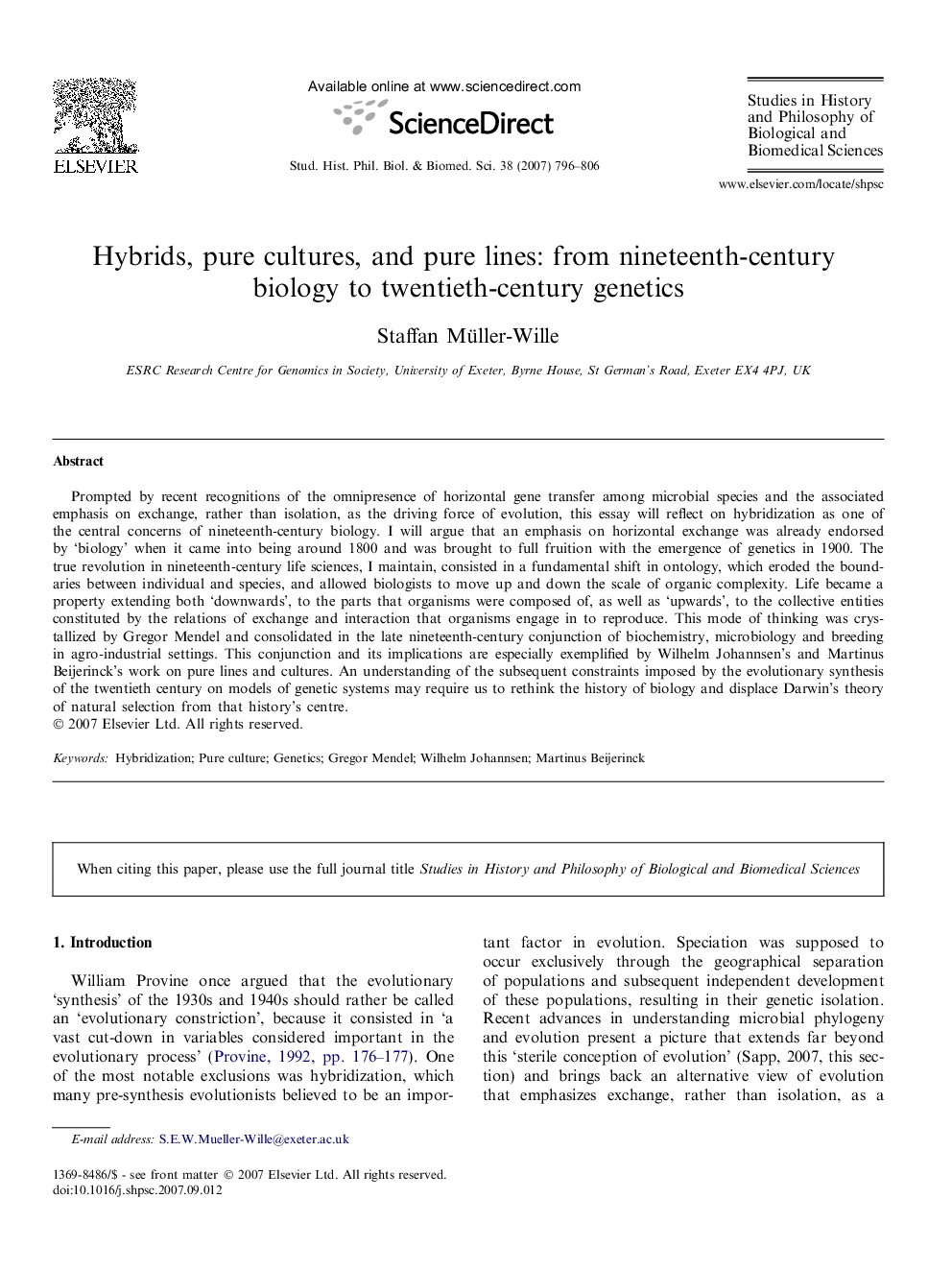| Article ID | Journal | Published Year | Pages | File Type |
|---|---|---|---|---|
| 1161335 | Studies in History and Philosophy of Science Part C: Studies in History and Philosophy of Biological and Biomedical Sciences | 2007 | 11 Pages |
Prompted by recent recognitions of the omnipresence of horizontal gene transfer among microbial species and the associated emphasis on exchange, rather than isolation, as the driving force of evolution, this essay will reflect on hybridization as one of the central concerns of nineteenth-century biology. I will argue that an emphasis on horizontal exchange was already endorsed by ‘biology’ when it came into being around 1800 and was brought to full fruition with the emergence of genetics in 1900. The true revolution in nineteenth-century life sciences, I maintain, consisted in a fundamental shift in ontology, which eroded the boundaries between individual and species, and allowed biologists to move up and down the scale of organic complexity. Life became a property extending both ‘downwards’, to the parts that organisms were composed of, as well as ‘upwards’, to the collective entities constituted by the relations of exchange and interaction that organisms engage in to reproduce. This mode of thinking was crystallized by Gregor Mendel and consolidated in the late nineteenth-century conjunction of biochemistry, microbiology and breeding in agro-industrial settings. This conjunction and its implications are especially exemplified by Wilhelm Johannsen’s and Martinus Beijerinck’s work on pure lines and cultures. An understanding of the subsequent constraints imposed by the evolutionary synthesis of the twentieth century on models of genetic systems may require us to rethink the history of biology and displace Darwin’s theory of natural selection from that history’s centre.
